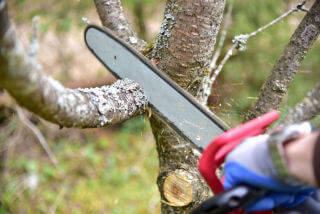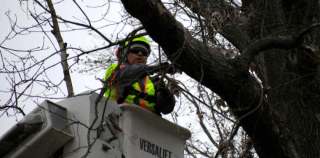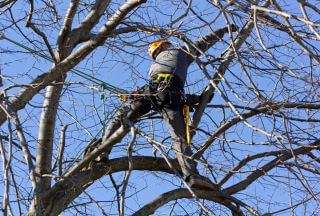Tree pruning is important for several reasons. It promotes tree health by removing dead, diseased, or damaged branches, allowing the tree to allocate resources more efficiently. Pruning also helps shape and maintain the desired structure of the tree, enhances its appearance, and reduces potential hazards by eliminating weak or overgrown branches.
The best time to prune trees can vary depending on the tree species and the specific goals of pruning. In general, dormant pruning during late winter or early spring, before the tree starts to actively grow, is recommended. However, certain trees may benefit from pruning at other times of the year, such as after flowering for ornamental trees or in late summer to early fall for trees prone to diseases like oak wilt.
While basic pruning tasks like removing small branches or deadwood can be done by homeowners, it is generally recommended to hire a professional for more extensive tree pruning. Professional arborists have the knowledge, experience, and specialized tools to assess the tree's health, determine the appropriate pruning techniques, and ensure the job is done safely and correctly to avoid harming the tree.
When done correctly and by skilled professionals, pruning does not harm trees. In fact, proper pruning techniques promote healthy growth and reduce the risk of disease or damage. However, improper pruning, such as excessive or incorrect cuts, can negatively impact the tree's health and structural integrity. Hiring a professional ensures that the pruning is done properly and in accordance with industry standards.
Canopy thinning is a pruning technique that involves selectively removing specific branches within the tree's canopy to reduce its density. This process allows more light and air to penetrate the canopy, promoting better air circulation, reducing wind resistance, and improving overall tree health. Canopy thinning also enhances the tree's aesthetic appeal by providing a more balanced and open canopy.
Canopy elevation, also known as crown raising, involves removing lower branches from the tree to increase clearance between the ground and the lower part of the canopy. This pruning technique is typically performed for safety reasons or to create clearance for vehicles, pedestrians, or structures. Canopy elevation is often necessary in urban areas where trees need to coexist with infrastructure and people.
Canopy clearing refers to the removal of branches and foliage from the interior of the tree's canopy. This technique is employed to alleviate congestion within the canopy, improve air circulation, and reduce the risk of disease or pest infestations. Canopy clearing also helps redirect the tree's energy towards the healthier branches, promoting better growth and overall tree vigor.
The frequency of tree pruning depends on various factors, including tree species, growth rate, desired aesthetics, and specific tree health needs. In general, routine pruning every 3 to 5 years is recommended for maintenance purposes. However, it's essential to have an arborist assess your trees to determine the ideal pruning schedule based on their unique characteristics.
Yes, pruning plays a crucial role in enhancing fruit production in fruit-bearing trees. Proper pruning helps maintain the tree's shape, control its size, and improve light penetration and air circulation within the canopy. These factors contribute to increased flower and fruit production, improved fruit quality, and reduced risk of disease or pest issues.


